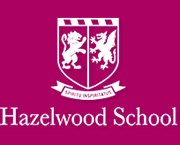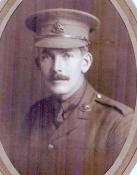
War Memorial
| Captain John Broughton WHITE MC | |
|
D Company, 1/8th Battalion Nottinghamshire and Derbyshire Regiment (Sherwood Foresters) Date of birth: 8th March 1889 Date of death: 2nd December 1959 Survived aged 70 Unknown |

|
| John "Jack" Broughton White was born at "Leahurst", Tickhill on the 8th of March 1889 the fourth son of Sir William Knight Hamilton Ramsay White and Lady Edith Laura (nee Paris) White of “Leahurst”, Tickhill, Rotherham in Yorkshire. He was educated at Hazelwood School until April 1901 where he was a member of the 2nd Football XI in 1899. On leaving the school the school magazine wrote: - "He has never succeeded in getting into our 1st Eleven, but has been a tower of strength to the 2nd." He went on to Cheltenham College where he was in Hazewell House until December 1907 and was a member of the Hockey XI and of the Cricket XI in 1906. He was a member of the College Cadet Corps. On leaving school he went into coal mining in Nottinghamshire as an engineer and played cricket for the Yorkshire Gentlemen. He was commissioned as a 2nd Lieutenant in the 8th battalion The Sherwood Foresters (Nottinghamshire and Derbyshire Regiment) on the 9th of June 1909. He was married at St John the Baptist Church, Southen-on-Sea to Violet Corney (nee Milnthorpe) on the 8th of February 1914. They had a daughter, Bridget, born on the 2nd of September 1920.On the outbreak of war he was living in Panama where he worked as a banana planter and returned to join up but at the end of 1915 he was laid low with a recurrence of malaria. He was commissioned as a 2nd Lieutenant in The Sherwood Foresters (Nottinghamshire and Derbyshire Regiment) on the 17th of January 1916. He attended a bombing course at Nottingham in March 1916 and at Otley later the same month. He joined the 1/8th Battalion of his regiment at the front in May 1916 in time for the battalion’s attack on Gommecourt in July. He was promoted to Lieutenant in July 1917. He attended a Divisional bombing course in September 1916 and a bombing course at a further one at the Divisional Infantry School in October 1916. He was appointed as Battalion Bombing Officer in September 1916. He attended a course at the Southern Army Bombing School in September 1917 and was promoted to Acting Captain from the 1st of October to the 30th of October 1917 when he was in temporary command of A Company. He was appointed as Assistant Battalion Adjutant in February 1918 and was on leave in March 1918 when the Germans opened their spring offensive and returned to the battalion in May 1918. He was promoted to Acting Captain when he took command of D Company on the 18th of July 1918. In August 1918 he attended a course at the 5th Army Infantry School. On the 29th of September 1918 the battalion was detailed to cross the St Quentin Canal to support operations in the capture of the Hindenburg Line. D Company was assigned the task of “mopping up” behind the main battalion attack. The battalion crossed the canal at 10.20am to move to their assembly positions and when they passed through the village they encountered considerable resistance from German machine guns and snipers and commenced the task of silencing them. This was done and they arrived at their assembly trench ten minutes later as a result. Although they were supposed to have tank support, this was not forthcoming and so they attacked without it in extended order and under heavy artillery fire. Their objective as taken and consolidated at 12.15pm after which the 6th Battalion of their regiment passed through them to continue the attack. The battalion's casualties during the attack were one officer and ten other ranks killed with one officer and one hundred and one other ranks wounded or missing. For his actions that day John White was awarded the Military Cross, which was announced in the London Gazette of the 15th of February 1919. The citation for his Military Cross, which appeared in the London Gazette of the 30th of July 1919, reads – “At Bellenglise on the 29th of September 1918 he led his company to the attack with great ability, courage and coolness. The forming up was carried out under heavy shelling and under most adverse conditions as there was a dense fog which made it impossible to advance except by compass bearing. Nevertheless direction was maintained and objectives gained without delay under the greatest difficulties. When advancing to take up positions for forming up for the next advance, on his own initiative he assisted the leading brigade with the mopping up of the village in an effective manner, capturing a large number of prisoners and guns. He did fine work” On the 3rd of October 1918 the battalion attacked Ramicourt and Montbrehain and the battalion history mentions his movements that day: - "Ramicourt was eventually reached by oddments of A, C and D Companies, the remainder of the Battalion having got too far left, and passing through its northern outskirts. There were several machine guns in the village, and snipers were active from the windows of the houses. These were all successfully mopped up with the help of the 6th Battalion, who pushed up a Company and their Battalion Headquarters, as there were so few troops at this point, the 5th Battalion having edged off through the Southern outskirts of the village. Jack White was seen in the village, wandering round quite unconcerned, revolver in holster -a small cane which he carried, being apparently his most trusty weapon." He returned from France in December 1918 to receive the battalion colours and, with an honour guard consisting of 2nd Lieutenant James H. Smith, Company Sergeant Major Cobb, Sergeants Martin and Skelton, depositing them in Newark Parish Church. He relinquished the rank of Acting Captain on ceasing to command a Company on the 18th of May 1919 and was demobilised at No. 1 Officer Dispersal Unit at Ripon on the 21st of May 1919. He was promoted to Captain and as commanding officer of C Company on the 31st of July 1920. He was initiated as a Freemason in the Isle of Axholme Lodge on the 26th of May 1920. He transferred to the 5th Battalion King's Own Yorkshire Light Infantry on the 10th of April 1921 with the rank of Captain ,with precedence from the 31st of July 1920, for service during the national strike in 1921. His service with them ceased on the 5th of July 1921. He wrote to the war Office in a letter dated the 25th of April 1922 to request that he be allowed to resign his commission and not to be placed in the Territorial Reserve of Officers. He resigned his commission with the honorary rank of Captain on the 30th of May 1922. He emigrated to Canada on board the SS "Empress of Britain", landing at Quebec on the 27th of September 1922. He eventually settled at Three Valleys in British Columbia as a prospector and trapper. He died at Sidney near Vancouver |
|
| Went on to Cheltenham College |
Back